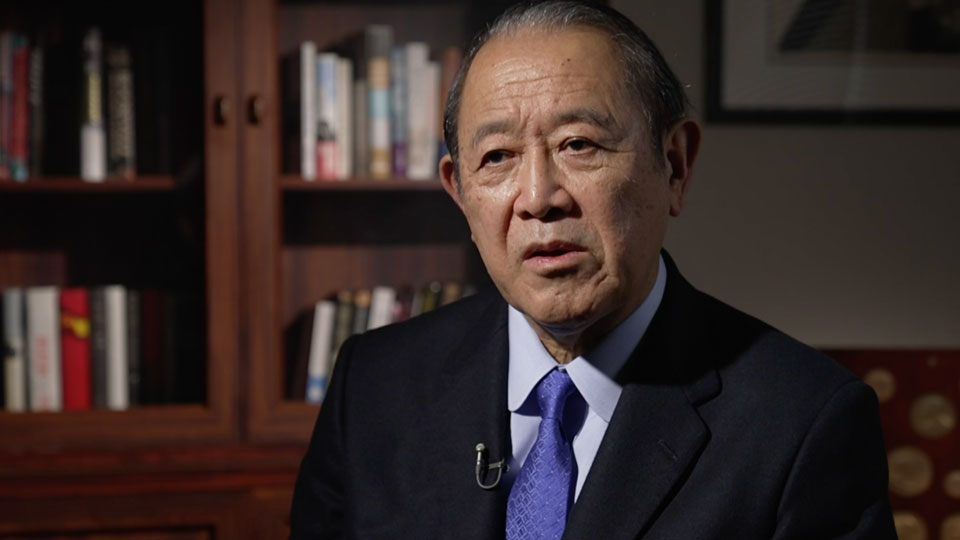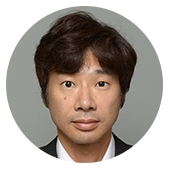Roos, who served as ambassador to Japan between 2009-2013, played a central role in the joint efforts between the two governments in response to the nuclear crisis. "The Fukushima situation was...almost unprecedented in those initial days. We thought it was probably going to be bigger than the Chernobyl situation.
"My instincts were to what can we do to marshal the tremendous resources that the United States has both on the military side and the civilian side in order to help address this crisis. That was my total focus," he recalls.
In the immediate aftermath of the March 11 earthquake and tsunami, the US State Department made an unusual offer of around-the-clock support to Japan.
Fujisaki Ichiro, then Japan's ambassador to the US, was deeply impressed.
"I felt that the US leaders were really doing everything they could," he says. "They were receiving daily briefs not only from higher-ups at the State Department, but also from the Department of Defense, Department of Energy, and experts at the White House. I think they felt that the enormity of the situation put them in a position where they had to be directly involved."

The NRC in Washington, D.C., was one of the agencies working round the clock on the issue. Its chairman, Gregory Jaczko, set up a special team straight away and at the request of his government, NRC experts were dispatched to Japan.
"That was really to provide the best support we could to American citizens so that they would be protected. Then to help support the Japanese government however we could with our expertise, with our understanding because of course, these were originally US-designed reactors, and so we had some familiarity with the technology and were willing to help," he says.
"Countdown to meltdown"
Shortly after midnight on the 12th, then-President Barack Obama and Japanese Prime Minister Kan Naoto had their first phone conversation about the accident.
Kan laid out the situation: the tsunami breach had caused the plant to lose all power supply. And with that, there was a possibility that the plant could lose its functions for cooling the reactors. He made a request for help from the US military to transport power supply vehicles to the site.
Fukuyama Tetsuro, then Deputy Chief Cabinet Secretary, was coordinating Japan's nuclear disaster response, including communications with the US. He says: "The two leaders had a serious dialogue on the nuclear accident. I think that given the severity of the situation, Japan sought to build a cooperative system."
But, just one day after the earthquake, discord between Japan and the US became apparent. It was precipitated by the March 12 hydrogen explosion in a building of nuclear reactor unit 1.
Amid growing fears that Japan was losing control of the reactors, reports in the US mentioned a "countdown to meltdown." The NRC assumed a worst-case scenario where the nuclear fuel had melted down.
In Japan, the government was not explicitly stating the possibility of a meltdown, as plant operator Tokyo Electric Power Company (TEPCO) denied that one had occurred.
Roos says: "I mean, the American side clearly understood the urgency, but I don't think we ever thought that the Japanese did not appreciate the urgency. So I don't think that was going through our heads. Now, there were assurances in the beginning that everything's fine, but I think they believed that.''
Fukuyama believes that the difference in assessment surrounding the meltdown was the beginning of America's distrust of the information Japan was providing. "The US thought that there will be a meltdown, and was wondering why the Japanese side wouldn't say or admit to it. I think it was inevitable that the US would take the view that Japan was hiding something from the US," he explains.

"Assistant Secretary (of State) Kurt Campbell suggested that things could become catastrophic if we didn't move faster. They could really spiral into a critical situation. Therefore, I recognized at the time that there was an enormous discrepancy between the US perception and the Japanese perception — especially the TEPCO side in terms of nuclear reactor stability. And I believe that is what is behind the US developing a profound sense of crisis. I strongly felt that," says Fukuyama.
As the US struggled to obtain sufficient, essential information, it was forced to gather information independently by dispatching drones.
Jaczko notes that "certainly the best information we started to get was when we had US government assets doing flights over the reactors and starting to get very detailed radiation release data. That was some of the first solid information that we got to understand what was happening."

An unusual request
America's dissatisfaction with Japan's communications came to a head on the night of March 14. Ambassador Roos made an unusual request that US nuclear power experts be placed in the Prime Minister's Office, known as Kantei, to gather information.
The Japanese government did not accept the proposal immediately over concerns of possible interference in decision-making.
Roos tells: "We suggested in order to be in the best position to help that we have a representative in the Kantei. And that's how that came about. I can tell you there was nothing further from our minds than anything other than helping the Japanese confront this crisis. We always viewed ourselves as in a support role. And this was our close ally, our close friend, that was confronting this unbelievable, tragic crisis. It was all, 'What can we do to help?'"
Fukuyama cites Japan's stove piping as one of the reasons the US ambassador and other American officials had difficulty gathering accurate information. Fukuyama's notes reveal that while asking Japan for more information, Roos repeatedly stated that Japan's bureaucracy was getting in the way.
"There were discrepancies in information, there were gaps between the US perception and reports from the Japanese side. I think that these concerns or alarms spread like wildfire on the American side," notes Fukuyama.
After much discussion within the government, it was decided after all that NRC experts would be placed in a liaison body set up in the Prime Minister's Office, and would receive primary information from TEPCO and other sources.
A hydrogen explosion
But the crisis between Japan and the US would peak. On March 14, a hydrogen explosion occurred in the reactor unit 3.
If the reactor couldn't be cooled down there was a risk that the reactors themselves would explode and endanger onsite workers' lives. During the early hours of the 15th, information that TEPCO might abandon the operation and withdraw from the site was relayed to the Prime Minister's Office.
News of TEPCO's possible exit reached Washington as well. Ambassador Fujisaki was summoned by the State Department several times and received strong advice concerning Japan's position.
Fujisaki recalls: "Campbell said to me that in extreme situations like this one, Japan needs an all-of-government approach to the crisis. He added that it wasn't what the US should be telling Japan."

There were growing calls within the US government, including the NRC, for Japan to make "heroic sacrifices", meaning getting personnel in closer proximity to the reactors. This was necessary to find a way to cool the nuclear fuel rods, to prevent the release of substantial amounts of radioactive materials.
Jaczko says: "That's a term that I used in fact. So, in communication with Japanese counterparts within the US government it was our recommendation that people may need to take heroic actions. What that essentially means is they may have to get radiation exposure levels that could have permanent impacts on their health, whether it's long-term cancer or even potential death."
On the 17th, tensions were mounting. At first, only one Self-Defense Force helicopter was dispatched to douse water on the reactor complex, at the risk of exposing the crew to radiation.

Fukuyama recalls "President Obama called Prime Minister Kan immediately after the water dumps to say that he was very moved by the operation and that the US would like to cooperate more with Japan.
"When the water was dumped, I was repeatedly told by the US government that the Japanese side was showing how serious it was in dealing with the nuclear reactors, even risking lives. They also conveyed this to the American public. I think they started feeling this way not in terms necessarily of how effective water discharge would be in cooling the reactor, but rather in terms of clearing up feelings of mistrust and influencing more cooperation."
From then on, the US-Japan alliance started to show signs of improvement. The most critical issue was being tackled, and a platform for information sharing was established.
Roos says: "I think the fact that deep down we have an incredible trust for each other is critical. And the communication, as we've talked about, got better and better. But the governments need to continue to work on setting up mechanisms for communications in time of crisis."
Going on record for the first time, the players involved reveal the initial disconnect between Japan and the US. They all suggest that the basis for this was a discrepancy in preparedness and disaster management in dealing with nuclear energy — as well as a lack of transparency.
Fujisaki observes: "It wasn't a crisis in US-Japan relations. It was Japan's crisis. It was a crisis in that it challenged all of Japan's systems as a whole.
In a country like Japan, where there is a high probability there will be another big earthquake within the next 30 years, it is necessary for the government to lead the Diet to discuss, and the people to debate what needs to be done.
Fukuyama notes with the benefit of hindsight that "Japan's nuclear administration, which was steeped in the myth of safety, was incapable of functioning in a time of crisis. The US experienced the Three Mile Island accident and also knows what kind of situations nuclear weapons can cause. I felt that the US was far more prepared for the risks associated with nuclear power plants than Japan."
Looking ahead, Jaczko predicts: "The next accident is probably going to be something different that we didn't think about, that didn't happen at this accident, and we didn't then prepare for because it hasn't happened yet. So that's why I think that the overarching, most important lesson is to recognize that these accidents can happen.
"If we're going to embark on a nuclear program, you have to be honest about that. I think that honesty will go a long way to dealing with whether they're small or large, the accidents that happen in the future."
Analysis: Masuda Tsuyoshi, NHK World Senior Political Commentator
The Fukushima disaster created the biggest challenge for the Japan-US alliance since the end of World War Two. Both Roos and Jaczko were cautious in their remarks, but it is undeniable that the US was frustrated with Japan at the time because information about the exact situation of the reactors was not being disclosed to them.
During the Cold War era, the US had simulated nuclear warfare and had systems in place to respond to contingencies such as the release of radioactive materials. On the other hand, Japan was immersed in "the safety myth" that a nuclear accident would never occur. But the four people we interviewed believe nuclear accidents could happen again.
In February, the Kishida cabinet approved a bill that would effectively extend the operation period of nuclear power plants around Japan.
Given what happened in Fukushima, it is paramount that the government learns from the accident and redoubles efforts to prepare for a nuclear emergency.


